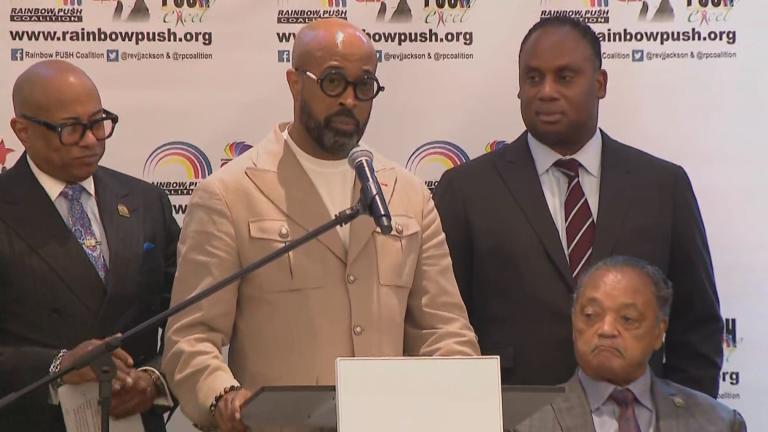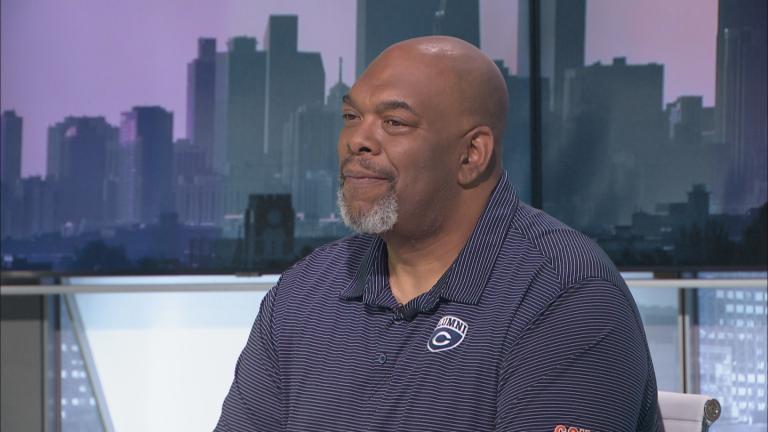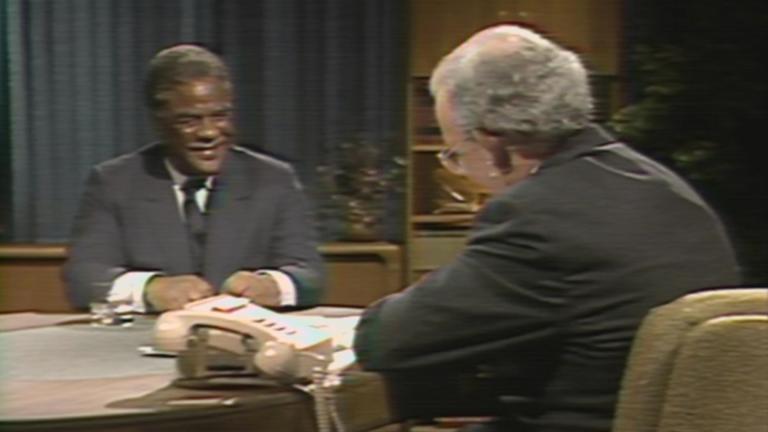Black student enrollment in Chicago Public Schools has been on a steady decline since the 1990s in parallel with the decline in Chicago’s Black population overall. Data has shown that Black students are disproportionately subject to discipline, underrepresented in the city’s top-rated high schools and have to travel the farthest of any demographic group to get to school.
Dar’tavous Dorsey, director of partnerships and community engagement with the University of Chicago Crime and Education Labs, said the declining Black enrollment in CPS reflects how the students he works with feel disengaged from and devalued by the district. He points to safety worries and culturally disconnected approaches to education as barriers to improvement.
“Safety — it’s not just leaving home and the transition to a school, but then also in the building, what does that look like?” Dorsey said. “It also is education. … They are two to three years behind in the academic component. So how are we making sure that we cater to that population that’s struggling to catch up with the academic component, but then also making sure that they feel safe in … what we’re trying to instill in them, the school system?”
Dorsey encouraged parents to seek out resources and support for their kids through in-school partnership programs like Becoming A Man, Working on Womanhood and Back to Our Future.
“I think we should start with the community partners in your neighborhood … and then the in-school based, like, community partners, such as Youth Guidance who have (Becoming A Man) in school or (Working on Womanhood),” Dorsey said. “We need to step up and have our community be more involved. And so parents should reach out to the local community partners in their community to … do that one-hand pass-off from the students but then also to the school instructors as well.”
Black Community Collaborative founder and CEO Natasha Dunn said she has called upon CPS to create a Black student achievement committee since Janice Jackson was at the helm.
“We have serious issues that’s been really exacerbated due to the pandemic,” Dunn said. “We have students who were disengaged during the pandemic. We have now the idea of students being able to have to just go back to school as if nothing ever happened. And before the pandemic, I always say we were in the academic pandemic, we had students who were behind in reading, math in the Black community. Black students were at 10% reading proficiently, and that’s not acceptable. And so we need to have an effort that’s going to really drive home solutions, culturally relevant solutions, to bridge that gap.”
Dunn also questioned whether CPS schools in predominantly Black neighborhoods are actually being fully enrolled.
“We’ve been doing research on CPS’ enrollment, and what we’ve seen is that there are schools who are in low-income communities, schools that are disproportionately Black that have low enrollment,” Dunn said. “And when we think of low enrollment, we think that there’s no students to be enrolled, but what we found on CPS’ website is that there are schools who have thousands of students who’ve applied, but they just were not accepted into the school. These were students who rightfully had the credentials to be accepted, but they’re just not accepting them. So when we talk about … that there’s this effort to bring students back to CPS, (are they) actually doing that? That’s the question we have. And then when we think about, where are these students going? Where are they forced to go to school? Are they forced to travel outside of their community to go to school? So some of the enrollment issues are predicated on the fact that CPS is just not really following that protocol in terms of monitoring schools that are under-enrolled or underutilized.”
Nicole Collins, parent leader with Community Organizing and Family Issues/POWER PAC IL, also feels as though Black students are not being equitably served by CPS. She has two children in CPS schools, including a rising fourth grader in a school with a majority Latino population. Collins said her child has endured racist taunts from classmates and feels isolated by classes being taught largely in Spanish.
“I don’t feel like her needs are being met,” Collins said. “She’s been having problems inside the school as far as, like, bullying and academically. They’re speaking Spanish in her class, so her reading level, math level is kind of low and … I feel like they predominantly just cater to the Hispanics. My daughter, she goes to the teacher like, ‘I don’t understand, can you help me?’ and the teacher will tell her, ‘Well, we don’t have time to help you one on one, but you’ll get it, maybe we’ll do something after school,’ but then they never get to it with her.”
Collins also has a rising senior, and he frequently felt unsafe both in and out of school when he attended Chicago Bulls College Prep, prompting him to switch schools.
“It’s a big safety issue,” Collins said. “They’ve had fights, they had bomb threats in Chicago Bulls College Prep, to where my son feels unsafe. So now he just transferred to Chicago Tech, and that’s where he’s going starting Monday. And then the gangbangers that are in my area, the Hispanic (gang members) bother him because he’s an African American child. … I just want my son to have the opportunity to be a young, prosperous, young man and just be safe and get an education that he needs.”
Chalkbeat reporter Samantha Smylie said CPS is facing some ongoing systemic difficulties when it comes to issues of restraints and bus transportation — both issues that disproportionately affect Black students. Smylie has been reporting on CPS’ failure to comply with a 2021 state law regarding how staff is allowed to physically restrain students.
“It says that basically, if staff are restraining students or placing them in timeout or seclusion, that they’re supposed to be trained,” Smylie said. “And so Chicago Public Schools not only have untrained staff doing physical restraints, they are also not notifying parents within 24 hours of an incident happening, and they’re also using outlawed methods of restraint, prone and supine restraint. And so right now, the State Board of Education has put some pressure on the district to come into compliance.”
The shortage of school bus drivers that has dogged CPS since classes resumed after pandemic shutdowns is part of a nationwide phenomenon. Smylie said there’s not a lot of reason for optimism for improvement in this school year.
“In the previous year, school districts have used COVID relief funds as a bonus signup for some folks,” Smylie said. “But it doesn’t seem like all the efforts that have been made has really worked to get more drivers. And so this school year, Chicago Public Schools says that they are going to focus on making sure that transportation is given to students with disabilities, those who have Individualized Education Plans, and also students who are experiencing homelessness, and that takes away transportation from students in selective enrollment schools and in magnet schools. But also, those are the groups of students that are federally mandated to have transportation. But what I’m hearing so far from parents is that they don’t even know their bus routes. They’re not sure what Monday is going to look like for them or their kids.”








